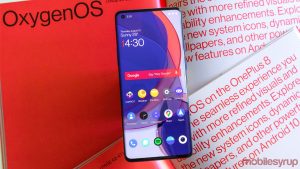This article is designed for tech-savvy readers who are familiar with the OnePlus brand and its evolution over the years. It’s for those who are considering purchasing a new smartphone and are interested in staying up-to-date with industry trends. Readers will benefit from gaining insights into the changes and challenges OnePlus has been facing, helping them make informed decisions about their next smartphone purchase.
The Shift from Flagship Killer to Flagship
OnePlus, once the pioneer of the “flagship killer” concept, has undergone a transformation that has left its dedicated user base somewhat disillusioned. In its heyday, the brand was synonymous with high-quality smartphones that provided top-tier performance without the exorbitant price tag. However, as time has progressed, OnePlus has transitioned from offering affordable alternatives to becoming a flagship brand itself. The shift is evident in the pricing of its recent devices, which now compete in the $700-$1000 range. While this evolution aligns with business strategy, it challenges the brand’s original message.
1. Nord’s Rising Appeal and Impact on Flagships
The OnePlus Nord series has emerged as a revelation, capturing the attention of fans who once gravitated towards the brand’s flagships. This shift is a response to the realization that OnePlus had veered away from its core audience while striving for premium flagship excellence. The Nord series, with its emphasis on value for money, has rekindled the essence of the brand’s earlier days. However, as Nord gains traction, questions arise about the dwindling allure of OnePlus’s higher-end offerings. While sales data is scarce, the company’s focus on Nord is evident from its ambitious sales projections.

2. OxygenOS Dilemma: Merging and User Experience
The merger between OnePlus and Oppo raised concerns about software identity, particularly OxygenOS – a once-praised minimalistic and clean interface. This alignment has led to a growing resemblance between OxygenOS and Oppo’s ColorOS skin, causing distress among OnePlus enthusiasts. The migration to ColorOS has been marred by issues ranging from slower Wi-Fi speeds to lackluster UI. This shift threatens the unique user experience that OnePlus devices were celebrated for. The challenge lies in balancing the integration’s benefits with the preservation of the brand’s distinct software identity.

3. The Future of OnePlus: Balancing Act Required
As OnePlus navigates its evolution, it treads on a delicate path. The brand’s prominence in the American market is noteworthy, but its decisions in the coming months will define its trajectory. The company must address the software concerns that are eroding customer trust. Striking the right balance between the Nord series and flagship offerings is pivotal. Revisiting its roots while embracing change is essential to uphold the brand’s identity and cater to a diverse audience. The challenge ahead lies in maintaining the elements of trust, expertise, and value that endeared OnePlus to its users in the first place.

Conclusion:
In conclusion, the anticipation that once surrounded OnePlus’s releases seems to have waned, leaving many enthusiasts disheartened. The brand’s transformation from a “flagship killer” to a flagship itself has changed the dynamics of the smartphone market. While business-wise it makes sense, it has led to a shift in perception that doesn’t align with its original ethos.
The rise of the OnePlus Nord series offers a glimmer of hope, signaling a return to the brand’s roots by delivering exceptional value for money. However, this resurgence comes at the cost of the flagship’s former allure. As Nord takes the spotlight, OnePlus must tread carefully to avoid diluting its flagship offerings’ appeal.




